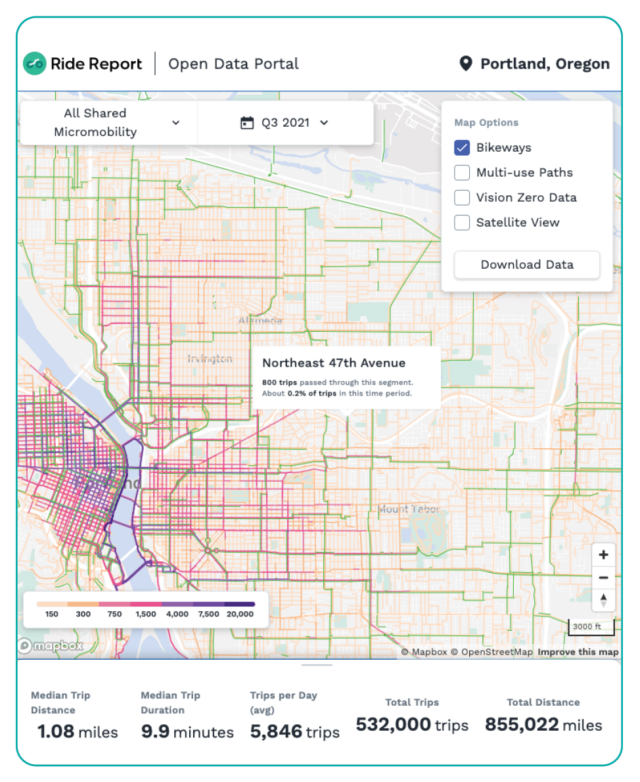
Download “Making Bikes Count.” (pdf)
The first Urban Bikeway Design Guide, introduced a decade ago, sparked a street design revolution among cities in North America. In our next chapter of city-led guidance, we are releasing a series of working papers to address the most critical gaps in bikeway planning and design guidance, as part of the long-awaited update to the Urban Bikeway Design Guide.
Today we are excited to share the first of these working papers, Making Bikes Count: Effective Data Collection, Metrics, & Storytelling. This paper is a compilation of real, actionable recommendations on building a better bike counting program, developed by expert city staff and practitioners to help cities meet their climate and equity goals.
Why count bikes?
As the saying goes, “what gets counted, counts” in transportation and street design. Bike count programs that focus on trips during peak commute times, in downtown areas, or on built-out bike infrastructure do not capture the full range of biking activity happening in cities. Trips made outside of existing bike networks or during off-peak hours are more likely to be made by delivery couriers, low-income riders, families or caregivers, youth, seniors, and riders of color. By improving their bike counting programs, cities and states can make biking safer and more equitable for everyone, and make a stronger case for increased financial support.
Thoughtful data collection can be a powerful tool, as NACTO has previously illustrated in our Bike Share Intercept Survey Toolkit and our guidelines for managing mobility data. But it’s not enough to just create a good bike count program; cities must also proactively tell the story of biking in their communities. The strategies outlined in Making Bikes Count provide actionable guidance on how cities can do this and, over time, improve and expand upon their bike counting programs.

Mapping shared micro-mobility trips in Portland.
Get Counting in 3, 2, 1….
Making Bikes Count is a practical, how-to guide for planners and practitioners who want to build equitable bike count programs, but do not have the resources to use existing guidelines, and therefore have minimal count programs. This working paper synthesizes expert technical knowledge from cities across North America into accessible guidance to improve bike counting programs at any stage.
With intentional data collection and storytelling, the tracking of ridership trends over time, investment in data quality and validation, as well as ensuring ongoing data transparency with the public, cities can use bike counts to engage better, plan better, and get more people on bikes. From a quick-start “get counting” guide to advice on communicating trends, Making Bike Counts also includes in-depth guidance on:
- Building a trendline bike program with Network Trend Counts
- Scaling up data collection with technology, including automated counters
- Validating and improving data quality
- Selecting and calculating useful metrics
- Telling compelling stories with data that are tied directly to your city’s values and goals
A good bike count program collects and tracks data to show how well-planned investments in infrastructure result in positive ridership changes, safer streets, and more access to opportunity. By looking beyond typical counting methods, capturing the diverse array of trips and riders in their cities, and telling the most illuminating stories found from the data, cities can use this data to plan for and get support for more equitable biking environments.
Read more in the full working paper (pdf), and stay tuned for more state-of-the-practice resources from NACTO’s Cities for Cycling network in the following months!